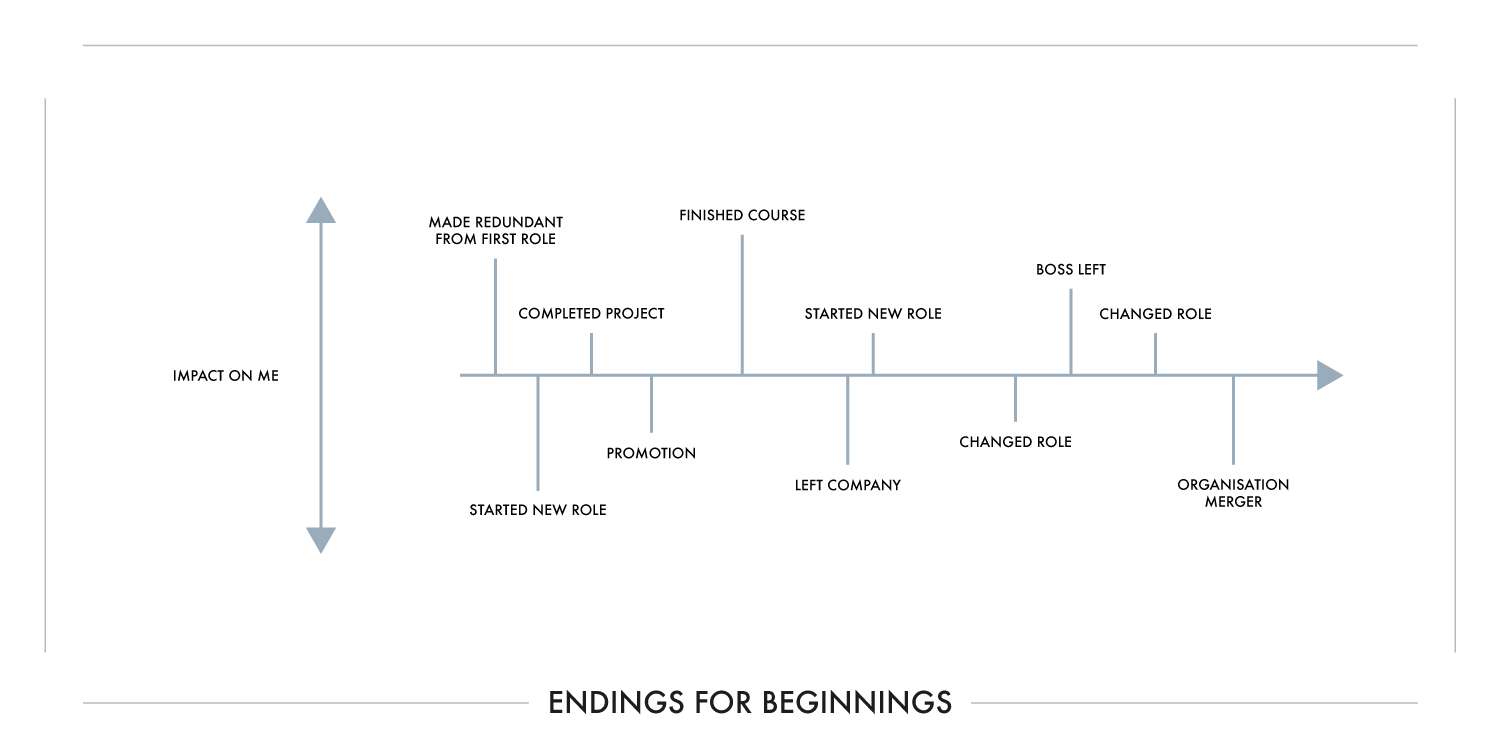Exploring Organisational Loss
When we do the full work of attending to an ending, inevitably this will involve acknowledging some form of loss.
Loss is more complex, more subtle and more interwoven than people sometimes think.
And this is stuff we aren’t taught.
We all tend to rush to appealing beginnings, and what leaders may experience in terms of resistance may well be because of that hurry and people not having taken the opportunity to acknowledge the loss. This is as true of perceived positive transitions such as a promotion as any other kind of ending.
So far, we have used the Four Pillars as a way of looking at a specific ending. We offer here a way to become more present to moving forward by charting your endings over time.
CHARTING YOUR ENDINGS: AN EXERCISE
This timeline exercise is a way of stepping back to look at a bigger picture of your relationship with endings as a leader in order to identify potential patterns for you and create future choices.
Begin by taking a landscape piece of paper. Draw a horizontal line across the middle and chart your work endings and beginnings from the start of your career until now.
Examples of these could be:
Change of job – external or internal
Change of team
Project completion
Merger, Acquisition
New boss
Change of focus for business
Do add your own to this list if you need to, and if you’d like to you can add your personal ones.
What do you notice about these Endings and Beginnings?
An additional step can be to look in more detail at the endings that stand out for you by naming the losses that were involved. Here are some examples of what we might lose as a result of an ending.
Other types of loss might be:
Independence, Access, Purpose, Direction, Intended outcome, Results, Friendship, Sense of self, Time, Familiarity.
From here, you can choose to use the Four Pillars to explore this loss further.
We recommend walking away from the work and re-visiting it a couple of times to see what, if anything else you notice, and what you might have missed.
You can adapt this exercise to work from the perspective of a team, an organisational history, or in any way that is useful to you.
More resources to support our endings for beginnings work are available here.
We hope this is a useful structure for some thinking about your transition to the next phase of work, and that for you, as it has for us and many of our clients, it brightens and lightens the beginning of the next phase.
As always, we encourage you in doing this work, to seek support if at any point you think you need it, and to start with yourself, and not use these approaches to work on others unless you feel safe and qualified to do so.
Start with you. Work safely. Seek support.



